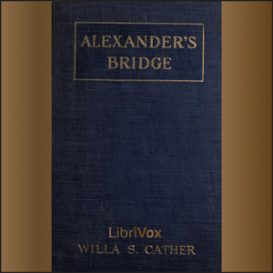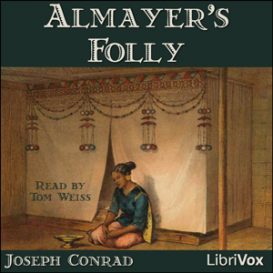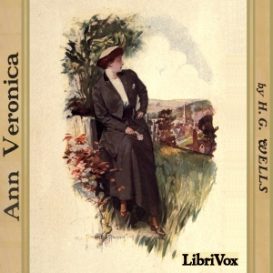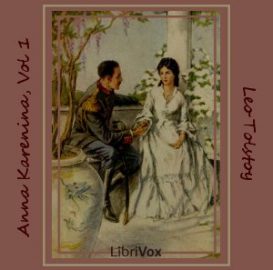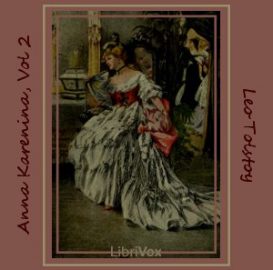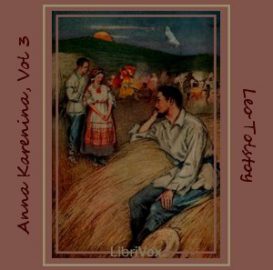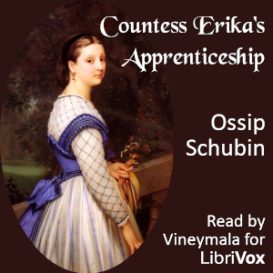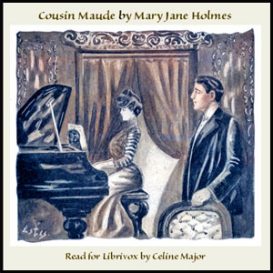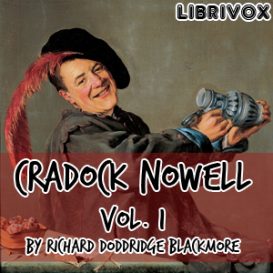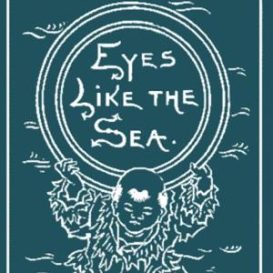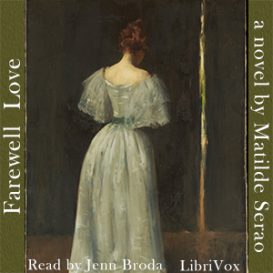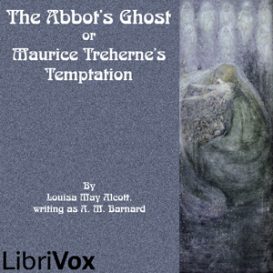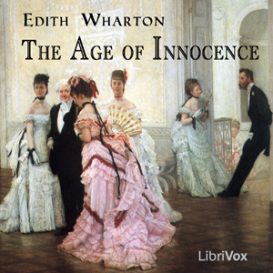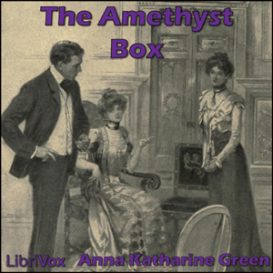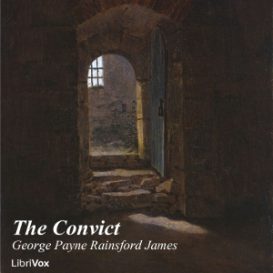romance
Showing 1–50 of 58 results
”Mr Rowl”
Raoul des Sabli?res, a French parole prisoner in England during the Napoleonic Wars, becomes enmeshed in a complicated tangle where his honour conflicts with his parole, and is sent to prison. Juliana Forrest, for whose sake he broke his parole, does her utmost to save him, and in his adventures and misfortunes, Raoul eventually also finds help from an unlikely source. This is a fun adventure story and romance, written in a style similar to Georgette Heyer. (Summary by Elin) – Summary by Elin
A Family Man
John Builder is a solid, middle-class Englishman. He is very domineering but finds that the women around him are insistent on living their own lives. They will not let him take control. His world begins to fall apart around him. Summary by Michele Eaton Cast: Stage Directions: MichaelMaggs Mr Builder: Adrian Stephens Maud: Jenn Broda Guy: John Payton Topping: Alan Mapstone Harris: Andrew Kennedy Camille: JennPratt Mrs Builder: WendyKatzhiller Annie: Michele Eaton Mayor: ToddHW Athene: Diana Helen Kennedy Ralph: Anthony Joseph Sergeant: David Purdy Moon: James R. Hedrick Chantrey: Mark Kilkelly Boy’s Voice: ksb013 Journalist: Sonia
Abandoned
We meet Miss Lucretia Lane as she is dressing for her marriage to Captain Francis Reynolds of the British Merchant Service. Though he loves her truly, she has severe misgivings. She goes through with the wedding in spite of this, but refuses to live with her new husband, and cannot be enticed or cajoled to do so. Then on the day the Captain is scheduled to ship out, she receives word that he has been gravely injured and his dying request is to see his wife. She flies to his side… and thus begins an adventure spanning eight years – love, loathing, shipwreck, love lost, and redemption. (Summary by P. Cunningham and Nadine Eckert-Boulet)
Adam Bede
Adam Bede, the first novel written by George Eliot (the pen name of Mary Ann Evans), was published in 1859. It was published pseudonymously, even though Evans was a well-published and highly respected scholar of her time. The novel has remained in print ever since, and is used in university studies of 19th century English literature. The story’s plot follows four characters rural lives in the fictional community of Hayslope?a rural, pastoral and close-knit community in 1799. The novel revolves around a love triangle between beautiful but thoughtless Hetty Sorrel, Captain Arthur Donnithorne, the young squire who seduces her, Adam Bede, her unacknowledged lover, and Dinah Morris, Hetty’s cousin, a fervent Methodist lay preacher. (Summary Wikipedia)
Adam Bede (version 2)
George Eliot was the pen name of Mary Ann Evans ? an ironic ?deception? given that Adam Bede, her first novel, is written unashamedly from a feminist standpoint. The story centres on a pastoral love triangle. Two young men, carpenter Adam Bede and squire Captain Arthur Donnithorne, are both in love with the mercurial Hetty Sorrel. There?s a further love interest between Adam and beautiful lay preacher Dinah Morris. The setting is a country village in the north of England in the last years of the eighteenth century. The author paints a wonderful landscape of contemporary life as it really was, and excels in the portraits of her characters. Each is flawed, each has their own passions, each is unique, and through this great novel, Eliot put her stamp on literature and on the way we view the vagaries of character, helping us to see people as they really are. This is one of the greatest novels in the English language. First published in 1859, Adam Bede has never been out of print since, which speaks volumes about its timeless quality. – Summary by Tom Denholm
Adeline Mowbray
Everybody makes mistakes, and everything has a price. This novel describes, according to its name, the life of Adeline Mowbray, full of everything: sorrow, happiness, falsehood, truth, kindness, and mistakes. This novel is an exploration of the human heart. Be prepared for a strong and enjoyable read. (Summary by Stav Nisser)
After the Divorce
Giovanna and Costantino Ledda are a happily married couple living with their young child in a Sardinian country village close to their extended family. Costantino is wrongly convicted of murdering his wicked uncle and with no way of supporting herself, Giovanna reluctantly divorces him and is driven to marry Brontu Dejas, a wealthy but brutish drunkard who has always lusted after her. As well as enduring a marriage amounting to slavery, Giovanna is derided by villagers for having two husbands. When Constantino is freed after the real murderer confesses to his crime, he and Giovanna are together again, but this time their relationship is outside the law, and sets both on a path of destruction, at the mercy of religious and social forces they cannot control. The author, Grazia Deledda, won the Nobel Prize for Literature in 1926, for writings which show passion and sympathy for the people of her native Sardinia, and ?After the Divorce? (Dopo il Divorzio) is one of her finest works. – Summary by Tom Denholm
Alexander’s Bridge
Bartley Alexander is a construction engineer and world-renowned builder of bridges going through what’s known today (but not in 1912) as a mid-life crisis. Although married to his wife Winifred, Bartley resumes his acquaintance with a former lover, Hilda Burgoyne, in London. The affair proves to gnaw at Bartley’s sense of propriety and honor. (Summary from Wikipedia)
Alexander’s Bridge (version 3)
Alexander’s Bridge is the first novel by Willa Cather, published under the name Willa Sibert Cather. Heavily influenced by the works of Henry James, the book tells the story of bridge builder Bartley Alexander. Through his relationship with Actress Hilda Burgoyne while he is married his wife, Winnifred, he meets his moral downfall, and through another set of circumstances he meets his physical. (Summary by Miranda Stinson)
Alias Miss Sherlock
Dick Brewster is implicated in a murder and comes to his aunt’s farm to hide. His Aunt Sarah stands by him in his need and they all move to the city in the effort to clear his name. She investigates on her own account and…. – Summary by The Author Cast list: Lily Ann, Help at the farm: Devorah Allen Aaron Flint, the hired man: Alan Mapstone Mrs. Brewster, from New York: TJ Burns Helen Brewster, her daughter: Jenn Broda Leonard Fillmore, a young country lawyer: skypigeon Sarah Newcomb, sister of Mrs. Brewster: Availle Dick Brewster: David Purdy Henson, a butler: Adrian Stephens Ralph Deering: Matthew Reece Henry Markham, a detective: ToddHW Officer Higgins: Wayne Cooke Delphine: JgreenVO Stage Directions: MichaelMaggs Editing: ToddHW
Almayer’s Folly (version 2)
Almayer?s Folly is about a poor businessman who dreams of finding a hidden gold mine and becoming very wealthy. Kaspar Almayer is a white European. He agrees to marry a native Malayan captured by Captain Tom Lingard, his employer, believing the marriage will bring him riches even though he has no love for the woman. They have one daughter named Nina. Almayer relocates with his wife to Malaysian where he hopes to build a trading company and find gold mines. His hopeless daydreams of riches and splendor cause his native wife to loath him. Almayer, desperate, hopes to find his salvation in Dain Maroola, a Malayan prince, who arrives on the island one day. Maroola agrees to work with Almayer and Lakamba, the Rajah, to send an expedition in search of the gold mines. In fact, Maroola is interested only in Nina with whom he has fallen in love. They plan to secretly leave the island. I can?t tell you more, or I would spoil the story. (Summary by Tom Weiss)
Amelia (Vol. 1)
This is the first volume of a three volume novel. In this novel, Amelia marries William Booth against her mother’s desires, and the two must move to London. Fielding explores the issues of married life such as infidelity and whether women’s intelligence is equal to men’s. (Summary by Libby Gohn)
Amoretti: A sonnet sequence
The Amoretti (meaning little love poems) is a sequence of 89 sonnets written in the tradition of the Petrarchan sonnets, a popular form for poets of the Renaissance period. Spenser?s sequence has been largely neglected in modern times, while those of his contemporaries William Shakespeare and Sir Philip Sidney have been acclaimed. However, because of the artistic skill, along with the emotion and the humor exhibited, these poems deserve a broader hearing, even though they may be somewhat difficult for the present-day reader, partly through Spenser?s love for words and expressions that were already archaic in his time. Amoretti, written throughout the year 1594 and published the following year, violates at least one of the conventional elements of the Renaissance sonnet sequences. Other poets, including Petrarch and Sidney, chose as the inspiration for their sonnets a woman who was inaccessible to the poet, sometimes even married to someone else. They idealized this woman, seeming to be extravagantly suffering because of their passionate admiration, while in real life they might hardly know the lady and had no real interest in an actual love affair. Spenser, however, dedicated his verses to a woman that he actually loved and sought, Elizabeth Boyle, whom he then married. Also the sonnet series by other poets were usually despairing of any fruition in regard to the lady, and Spenser certainly does show much frustration himself in his efforts to achieve a closer relationship with his love; but as the series progresses, he gradually sees improvement in the success of his wooing, as his actual wedding nears. The poems feature elaborate imagery, loaded with metaphorical situations, saying much the same thing repeatedly in a wide variety of ways, with much clever creativity, sometimes impressive and sometimes a bit awkward. There is a rich vein of humor running through the whole sequence, often through mock passion, and there is even a bit of sensuality in some of the later sonnets. The better poems are often sharp and crystalline, sparkling in their freshness and originality. (Introduction by Leonard Wilson)
An American Tragedy, Volume 1
Loosely based on a true story, this is the tale of Clyde Griffiths. At a young age, Clyde realizes that money and influence can get him the finer things in life. As a young man, he finds himself torn between the poor but virtuous Roberta, and Sondra the wealthy socialite. Can there be a happy resolution to this love triangle? Follow Clyde throughout his young life as he struggles to figure out whether he can truly have everything he wants. This is volume 1 of 2. – Summary by Tatiana Chichilla
An American Tragedy, Volume 2
The saga of Clyde, Roberta, and Sondra continues in volume 2 of 2. Social-climbing Clyde Griffiths wants nothing more than to marry the wealthy Sondra Finchley and ascend to the highest levels of Upstate New York society. However, there is a glaring obstacle in his way: Roberta’s pregnancy. Both had hoped to keep their illicit relationship a secret, but if Clyde can’t find a doctor willing to help them, something must be done. Perhaps something drastic . . . The tense and thrilling conclusion to Dreiser’s genre-defining novel of love, pain, the law, and the spirit. – Summary by Tatiana Chichilla
An Amiable Charlatan
An Englishman is enjoying his dinner at Stephano’s, at which he is a regular diner. A man enters quickly, sits at his table, starts eating his food, and hands him a packet underneath the table! So begins Paul Walmsley’s acquaintance – and adventures – with American adventurer Joseph H. Parker and his lovely daughter, Eve. (Intro by TriciaG) Note that there is an alternate reading of section 8. Both are excellent renditions, so enjoy either or both of them.
Angelica
Angelica’s dearest wish is to better herself. Not to be a factory worker, struggling every day to survive, but to be a lady. Refined, respected, and rich. She jumps at the chance to be a companion to a lady, hoping that she can learn how the other class lives, and how to be like them. Young and naive, her dream seems within her grasp – but can she hold on to it? (Summary by Krista Zaleski)
Ann Veronica
Ann Veronica was a controversial book detailing the development of a naive school girl into a “New Woman”. When it was published, the Spectator described it as a “poisonous book … capable of poisoning the minds of those who read it.” Although it is unlikely to offend modern listeners in this way, this novel addresses many feminist issues that are still relevant today. (Summary by Joy Chan)
Anna Karenina, Book 1
Anna Karenina tells of the doomed love affair between the sensuous and rebellious Anna and the dashing officer, Count Vronsky. Tragedy unfolds as Anna rejects her passionless marriage to follow her heart and must endure the hypocrisies of society. (Summary by Mary Anderson)
Anna Karenina, Book 2
In Part 2, Kitty?s health deteriorates from regret and heartbreak, while Levin retreats to his country estate. Anna and Vronsky continue to pursue each other and become the talk of polite society, to the chagrin of Karenin. (Summary by Mary Ann )
Anna Karenina, Book 3
Anna Karenina tells of the doomed love affair between the sensuous and rebellious Anna and the dashing officer, Count Vronsky. Tragedy unfolds as Anna rejects her passionless marriage to follow her heart and must endure the hypocrisies of society. (Summary by Mary Anderson)
Black Amazon of Mars (Version 3)
In his final adventure on Mars, Eric John Stark acquires a relic of an ancient Martian hero, a gem or lens which is believed to be the key to the strength of Kushat, the city that guards the Gates of Death in the frozen north. A brief inspection of the artifact plunges Stark into the mind of its creator, where he sees, through those long-dead eyes, the unutterably ancient, beautiful, and evil Martian race who are imprisoned in the ice beyond the Gates of Death, alive and plotting to reclaim Mars for themselves and to extend the ice, their world, around the whole planet. Falling into the hands of roving outlaws, Stark survives torture and overcomes his cruel torturer, thereby winning the respect of the leader, who wears black clothing and a fearful mask. After a daring escape, Stark makes his way to Kushat, with the double intent of restoring the artifact and warning the city that the outlaw band intends to attack it. He finds both tasks difficult but at length succeeds in persuading the city officials of the danger. The battle which ensues costs both sides dearly, and it also precipitates the main action of the novel, for a citizen flees the falling city intent upon opening the Gates of Death in the hope that whatever lies beyond will overwhelm the invaders. Stark pursues him, still carrying the ancient amulet, and is himself pursued by the now unmasked, black-clad leader of the outlaw band. Finally three antagonists find themselves bound together in a struggle with the ancients for possession of the planet Mars. (This story was later expanded in book form under the title People of the Talisman 1964.) – Summary by T. A. Copeland
Black Oxen
Lee Clavering, a young playwright falls in love with an Austrian countess, not noticing the adoring glances from the outgoing flapper, Janet. Unknown to the young lover, the object of his devotion is defying age with artifice in this controversial pseudo-science fiction romance. – Summary by Lynne Thompson
Bonne-Marie, a Tale of Normandy and Paris
Bonne-Marie, Henry Gr?ville?s last work, will no doubt create a sensation, such is its freshness, beauty, and delicacy. It is the story of a young girl, the daughter of a smuggler in Normandy, on the coast of France. Having been educated in a Convent, at Cherbourg, she returns from school where her father had placed her, and struggles in spite of her discontent to do her duty in her humble home. She turns a deaf ear to a lover?s pleading, and when her father is killed in a fray with the Coast-Guard, she leaves her home and goes to Paris to seek her fortune. The tale of her struggles with poverty, of her debut as a singer in one of the celebrated Caf?s ? where, after a great success, she loses her heart to an artist, is simply, powerfully and most pathetically told. What happens after we must leave the readers of this charming volume to discover for themselves, all of which is beautifully sketched, and the story from beginning to end is pure, fresh and breezy. Mrs. Sherwood?s English in this translation is beyond all praise ? it flows freely on from beginning to end. – Summary by the Publisher
Coffee Break Collection 005 – Love and Relationships
This is a collection of 20 short works (between 3 and 15 minutes long) that are great for work/study breaks, commutes, workouts, or any time you’d like to hear a whole story and only have a few minutes to devote to listening. The theme for Collection 005 is “Love and Relationships”, and may include romance, marriage, family relationships, friendships, working relationships, or even human-animal connections! [Summary by Rosie]
Coningsby, or The New Generation
Coningsby is the first of trilogy of political novels that Disraeli published in the 1840s, and gives an insight into his views of the political turmoil following the passage of the Great Reform Bill by the Whigs in 1832 (a second Reform Bill was passed in 1867 under Disraeli?s Tory leadership as prime minister). While Coningsby looks primarily at political questions, its successor — Sybil, or the Two Nations — was concerned with the ?condition of England? question and the growing social and economic imbalance between rich and poor that in tje writer’s view was hastened (though not begun) by the industrial revolution. Granted that Disraeli was not Dickens or Trollope or Eliot or one of the other giants of British letters in the nineteenth century, it?s a bit unfair to suggest (as some have) that the plots are thin and only there to provide the writer with a podium for setting forth his political and social views. It?s true that Boy Meets Girl, Boy Loses Girl, Boy Gets Girl, but much else happens as well, particularly thanks to the role played by the mysterious figure of the Jewish Sidonia, who in addition to enormous wealth and widespread international connections embodies a kind of wisdom that transcends the mere knowledge acquired by even the best educated Englishmen. Coningsby, himself a product of both Eton and Cambridge, is fortunate enough to be taken under his wing, and intelligent enough to accept his guidance. (Nicholas Clifford)
Contending Forces
Pauline Elizabeth Hopkins, despite an impressive record of productivity and creativity as a novelist, playwright, short fiction writer, editor, actress, and singer, is an African-American woman writer who has essentially been consigned to the dustbins of American literary history. Though contemporary with Frances Ellen Watkins Harper, Charles W. Chesnutt, and Paul Laurence Dunbar, Hopkins is only now beginning to receive the kind of critical attention that Harper has enjoyed for a slightly longer period and that Chesnutt and Dunbar have always had. Hopkins had work published in several genres, but her reputation today rests primarily upon Contending Forces: A Romance Illustrative of Negro Life North and South, the novel she published in 1900. (Introduction by Margaret)
Countess Erika’s Apprenticeship
The baron is busy building ventures which are doomed to fail. He thinks the next one would be better, and mourns the absence of his wife who went to beg for money from rich friends for his failing ventures. To this world of love, anger and disappointment, Erika is born, now a keen girl of 14. This story is about her way to fit in, solve her complicated relationships with her parents, and find love. Ossip Schubin is the pseudonym of Aloisia Kirschner, a popular Austrian novelist. – Summary by Stav Nisser
Cousin Maude
When Matilda’s husband James dies, she marries rich Dr. Kennedy thinking he will provide a good home for her daughter Maude. However, the doctor is a miser and assumes that Matty will be his housekeeper. They have a little boy who is crippled and the doctor ignores him. Maude is totally devoted to him and on her mother’s deathbed promises to look after him always. The story then evolves with Maude meeting her stepsister Nellie’s cousins JC and James. Nellie has set her sights on JC who is after her money while Maude develops strong feelings towards James. JC begins to fall for Maude and when he learns that she has come into an inheritance bequeathed to her by her mother’s former servant/nurse Janet he proposes to her. The complications that follow along with the arrival of a new stepmother add just the right amount of drama to this sweet romance. – Summary by Celine Major
Cradock Nowell Vol. 1
Cradock Nowell: a Tale of the New Forest is a three-volume novel by R. D. Blackmore published in 1866. Set in the New Forest and in London, it follows the fortunes of Cradock Nowell who is thrown out of his family home by his father following the suspicious death of Cradock’s twin brother Clayton. It was Blackmore’s second novel, and the novel he wrote prior to his most famous work Lorna Doone. ( Wikipedia) *Warning: Some listeners may be offended by some of the language. Words that were considered acceptable in the nineteenth century are not always politically correct today. It is LibriVox policy to leave the original wording as the author intended. Other volumes in the series: Cradock Nowell, volume 2 Cradock Nowell, volume 3
Eyes Like the Sea
He was a painter, a poet, a novelist. He lived during the Hungarian revolution and his love of freedom meant his life was often in peril. She was his first love, this girl with the eyes like the sea. She was at heart noble, good and loving. What an excellent lady might have been made out of this woman, if she had only met with a husband who, in the most ordinary acceptance of the word, had been a good fellow, as is really the case with about nine men out of every ten. But she always managed to draw the unlucky tenth out of the urn of destiny. And so she spurned his true love in favor of a high-flying dandy. He went on to pursue a life of politics and she to follow her capricious heart. But yet, throughout her life, she kept returning to him and to the end, of all men, she loved him perhaps best of all. (Eyes Like the Sea won the Hungarian Academy of Sciences prize for literature in 1890.) (Summary by MaryAnn)
Fanny Hill: Memoirs of a Woman of Pleasure
Fanny Hill: Memoirs of a Woman of Pleasure (1749) was the first widely-read English novel in the genre ?Erotica.? It was written by John Cleland as he was serving hard time at a debtor?s prison in London. Over the centuries, the novel has been repeatedly banned by authorities, assuring its preeminent role in the history of the ongoing struggle against censorship of free expression. Until Fanny Hill, previous heroines had conducted their amorous liaisons ?off-stage.? Any erotic misadventures were described euphemistically. As women who had gone astray, they always repented, which made even their most outrageous dalliances somehow suitable for a moralistic readership. The protagonist of Fanny Hill, however, never repented a single moment of her sexual exploits ? quite the contrary! And with Fanny, the devil is in the details, realistically described. (Summary by Denny Mike)
Farewell Love! A Novel
This tragic love story begins by meeting the passionate Anna Acquaviva who is willing to leave her position in society to elope with her lover after her guardian Cesare Dias will not give his consent to the marriage. Things do not turn out quite like she expected, and Anna is left to deal with the fact that she did what ?respectable girls don?t do?. Will Anna find true love after heartache or will she be forced say farewell to love forever? – Summary by Jenn Broda
Felix Holt, The Radical
“Harold Transome is a landowner who goes against his family’s political tradition (much to his mother’s distress), while Felix Holt is a sincere radical. The setting of the book, the 1832 parliament election, is used to discuss the social problems of that time. A secondary plot involves Esther Lyon, the stepdaughter of a minister who is the real heiress to the Transome estate, with whom both Harold Transome and Felix Holt fall in love. Esther loves poor Felix Holt, but would she choose a comfortable life with Harold Transome?” (Summary by Stav Nisser)
Fenton’s Quest
This story revolves around Gilbert Fenton, a very talented middle class businessman from London, who falls in love with a beautiful country woman far below his station. He decides to marry her anyway. But is she all that she seems? (Summary by Stav Nisser.)
Love Letter Collection 2008
LibriVox readers have cast their nets wide to create this small collection of letters and poems, from fiction and from life, from heart to heart and from soul to soul. With love for St Valentine. (Summary by Peter Yearsley)
The Abbot’s Ghost or Maurice Treherne’s Temptation
Written by Louisa May Alcott under her pseudonym, A. M. Barnard, this Christmas story deals with the themes of love and defending one’s honor. Although he is disinherited and poor, Maurice Traherne tries to win the hand of his love, Octavia.(Summary by Jennifer Stearns)
The Age of Innocence
In an era before the advent of electric lights, telephones or motor vehicles, there exists a small cluster of aristocratic “old revolutionary stock” families that rule New York’s social life. Under the rules of this society, “being things” is better than “doing things” and reputation and outward appearances come at the exclusion of everything else. In this Gilded Age, when America?s expansion and increased industrialism produce a group of newly wealthy robber barons and financiers, the patient, time-honored values of the old ruling class, and century, are giving way to the expediencies of the new. Caught at this cusp, a triangle of lovers, who must choose between the expectations of family and society, and the deepest yearnings of the heart. Newly engaged couple, Newland Archer, a young lawyer, and May Welland, a society debutante, are part of the old world, where the “right people” follow the “correct rules” and marry into “acceptable families.” The arrival from Europe of May?s cousin, the Countess Ellen Olenska, complicates their union, as Ellen?s mysterious past threatens to cast a shadow of scandal over the newly betrothed couple. Newland Archer, at first critical of Ellen’s bohemian lifestyle, and her seemingly wilful ignorance of the rules and customs of his Old New York, is soon captivated by Ellen’s warmth, spirit, and her generous and loving heart. Will he cast off the life for which he’s been groomed, or sacrifice happiness for duty and the greater good of the social order? (Summary by Brenda Dayne)
The Age of Innocence (version 2)
Edith Wharton became the first woman to win the Pulitzer Prize for fiction with this 1920 novel about Old New York society. Newland Archer is wealthy, well-bred, and engaged to the beautiful May Welland. But he finds himself drawn to May’s cousin Ellen Olenska, who has been living in Europe and who has returned following a scandalous separation from her husband. (Introduction by Elizabeth Klett) Proof listened by Stav Nisser & Betty M.
The Altar of the Dead
A fable of literally life and death significance, the story explores how the protagonist tries to keep the remembrance of his dead friends, to save them from being forgotten entirely in the rush of everyday events. He meets a woman who shares his ideals, only to find that the past places what seems to be an impassable barrier between them. Although James was not religious in any conventional sense, the story shows a deep spirituality in its treatment of mortality and the transcendent power of unselfish love. (Introduction by Wikipedia)
The Amazing Interlude
It is the early days of The Great War. As the curtain rises, Sara Lee is sitting by the fire in her aunt and uncle?s home, knitting a baby afghan. Her beau?s name is Harvey. He has his eye on a little house that is just perfect for two and he will soon propose to Sara Lee. But in this play, the mise en sc?ne is about to change. A fairyland transformation will take place and Sara Lee will step into a new and different story, where she is the princess in a forest of adventure. There is a prince, too, whose name is Henri. He is as strange as the forest itself. And then just as suddenly, the scene changes back and Sara Lee is once again sitting alone by the fire, knitting socks for the soldiers this time, and with a memory and a new stirring in her heart. This is the story of Sara Lee?s amazing interlude. (Summary by MaryAnn)
The Amethyst Box
On the evening before his marriage, Sinclair loses a precious curiosity from his collection: an amethyst box, containing a tiny flask of deadly poison. He suspects that this poison is in the possession of either his betrothed or her cousin, the girl his best friend Worthington loves. Turning to Worthington for help, they try to recover the box before the poison can be administered… (Summary by Carolin)
The Amethyst Cross
Things look bleak for Lesbia Hales. Her father does not let her marry the man she loves. Her mother is dead. She has to keep secrets in order to promote what she wants for herself. One day, her lover, George Walker, is injured in her home and someone stole the expensive amethyst cross. Who could have done that and why? – Summary by Stav Nisser.
The Black Moth
The year is 1752. Devil, the Duke of Andover, and highwayman Jack, the Earl of Wyncham are at odds over a country squire’s beautiful daughter. Cheating at cards, the marital problems of the younger sister of the Duke and the younger brother of the Earl, and debts beyond imagination form the backdrop for this romance, Heyer’s first work and the only one in the public domain. (Summary by Sibella Denton)
The Blazed Trail
Stewart Edward White wrote fiction and non-fiction about adventure and travel, with an emphasis on natural history and outdoor living. White’s books were popular at a time when America was losing its vanishing wilderness and many are based on his experiences in mining and lumber camps. The Blazed Trail is the story of early lumbermen in the northern woods of Michigan. The novel portrays the challenges faced by the workers focusing on one, Harry Thorpe, as he endeavors to be successful though completely unskilled when he enters the woods. The author mixes the splendor of nature with suspense, danger, and romance and provides glimpses into corrupt practices in the lumber industry at the time. (Summary by Tom Weiss)
The Blue Castle
Valancy Stirling, plain, twenty nine, and as yet unsought, is given a year to live by a great heart specialist. This is the story of her year in which she finds a blue castle of happiness in the Canadian woods. The Blue Castle is a 1926 novel by Canadian author Lucy Maud Montgomery, best known for her novel Anne of Green Gables. (Summary adapted from ALA Booklist)
The Convict
As young Lord Hadley and his companion Edward Dudley travel along a dark, coastal road, they encounter a young girl pinioned by a fallen wall. They rescue her and alert her father, stationed on the cliff-top, apparently watching for something or someone, before continuing their journey to the home of Sir Arthur Adelon. What was the girl doing out alone at night? What was her father’s business on the cliff? Who is the sinister-looking stranger that young Edgar Adelon spots at the home of his beloved? And does Dudley have a chance with the beautiful heiress Eda, or have her affections been won by his wealthy patron? As tensions rise between Lord and tutor, tragedy strikes and the harsh reality of the penal system is laid bare. With the backdrop of political unrest and the growing Chartist movement, this tale has intrigue, romance and passion.










